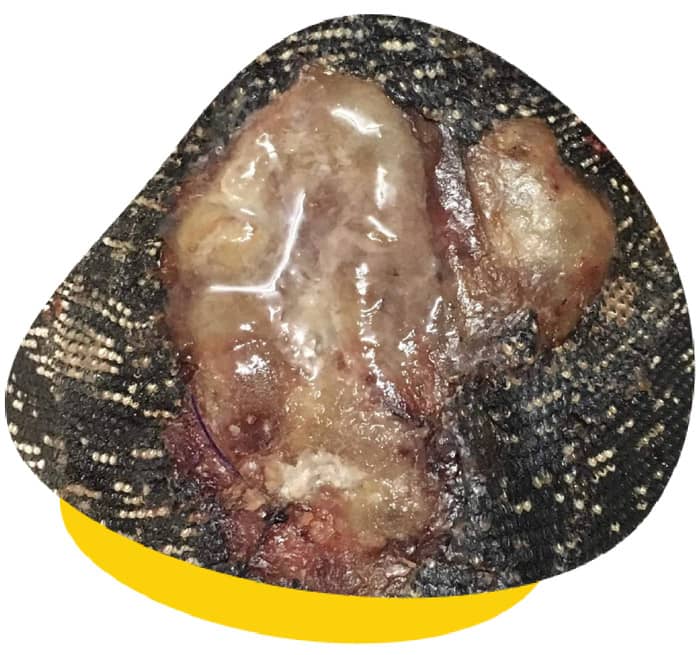When Hot is Too Hot!
Reptiles are ectothermic, meaning they depend on the environment to regulate their body temperatures. They often require additional heat sources in their enclosures.
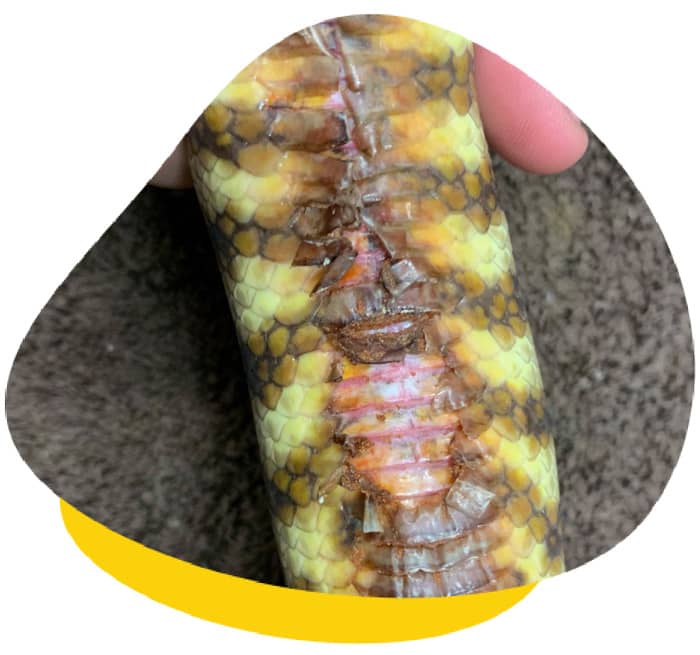
Unfortunately, some of these heat sources can lead to burns. These burns, caused by direct access to heat sources, are among the most common causes of illness in reptiles and just like in mammals, these burns can be classified as a first, second, third or fourth degree.
First-degree burns are superficial, only affecting the outer skin layer. A second-degree burn involves the outer and part of the deeper skin. A third-degree burn involves the destruction of the outer skin, the deeper skin layers and the subcutaneous tissues. Fourth-degree burns will penetrate even deeper and can affect the deeper muscle as well as the organs.
There are many theories about why reptiles do not have the same heat response as humans and why they do not remove themselves from the heat before getting burned. Some of these theories include reptiles having different heat and pain receptors and reptiles not associating the pain sensation with the objects they have come into contact with.
Regardless of the reason, burns are painful, and attempts should be made to prevent them.
How Do Reptiles Get Burned?
Reptiles rely on warmth from other sources to heat their body to their preferred temperature. The preferred temperature that each reptile likes is different for each species and varies amongst individual animals within that species.
In the wild, reptiles predominantly warm themselves through direct sunlight or sitting on or inside something that has been warmed by the sun. In captivity, we need to provide heat sources for the reptiles that we keep so they can safely reach their preferred temperature zone.
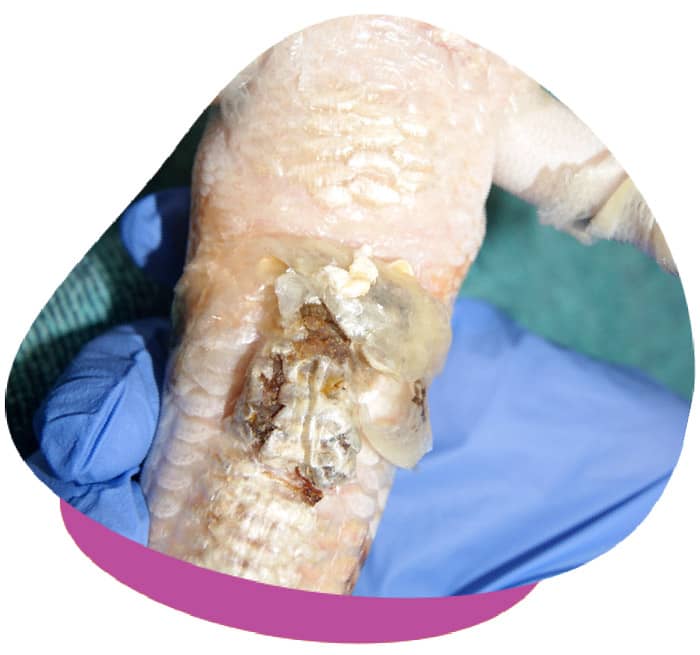
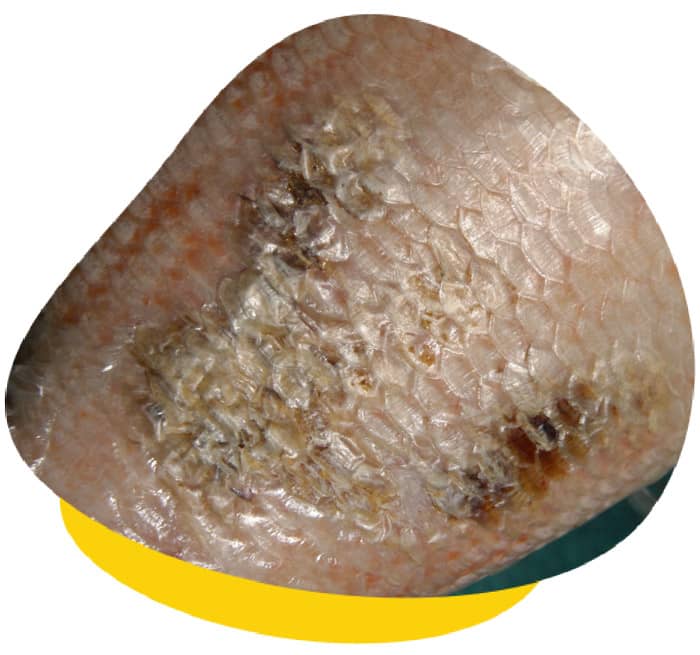
What Are Some of the Causes of Burns?
Some of the common causes of thermal burns in reptiles include:
- Not using protective mesh or covers over lights
- Allowing the reptile to lie directly on the heat cord or mat without having any barrier (i.e., a rock or tile) between the heat source and the reptile
- Heat caves malfunctioning
- Uneven heating of mats, cords, heat rocks or caves
- Water damage
- To narrow a basking area creating intense hot spot (e.g. overhead heat source too close to the reptile)
Not using a thermostat in the cage. Thermostats work by turning off the heat source once a specific temperature is achieved. Thermostats are recommended for all reptile cages with artificial heating.
How Do I Prevent My Reptile From Burning Itself?
Having your cage well set up with adequate protection, circulation and distance of the heat source is the best way to prevent burns from occurring. Using a good thermostat to avoid overheating of the cage is also important for all heat sources provided. Providing adequate space and thermal gradient allows your reptile to move towards and away from the heat source.
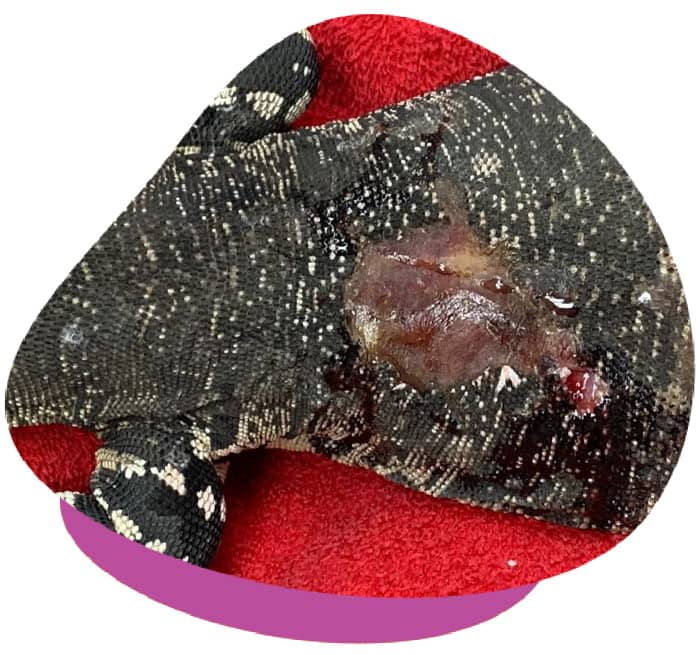
What Are the Symptoms to Watch Out for?
As mentioned, thermal burns can range in severity from mild scale trauma right through to complete burns that damage internal organs. In most cases, it can take a few days (sometimes up to a week) to show the true extent of the damage. The burns may appear as reddening of the scales to scabs and swelling of the skin to loss of scales with a white, red, or black appearance.
The reptile may also be quieter than usual, have trouble shedding, refuse to eat, and/or spend most of his or her time hiding.
How Serious Are Burns in Reptiles?
As there are many different degrees of burns, it is essential to seek reptile veterinary care if you notice any of the signs listed above. If the skin barrier is broken, the reptile may begin losing fluids through the burn and may become dehydrated.
Moreover, the skin protects the body from infection, so if the skin is destroyed, infectious agents, such as bacteria, fungus, and parasites, may enter the body. This can lead to systemic infection.
How Are Thermal Burns Treated in Reptiles?
Depending on the burns’ severity, most thermal burns can be treated medically with a range of antibiotics, anti-bacterial burn creams, fluid therapy and pain relief. Some cases require surgery, debriding (cleaning). Unfortunately, some severe cases can be fatal. These cases are particularly devastating for all involved as burns are very preventable.
For more information on optimal husbandry and heating options for your reptile, contact your local Unusual Pet Vets team.
